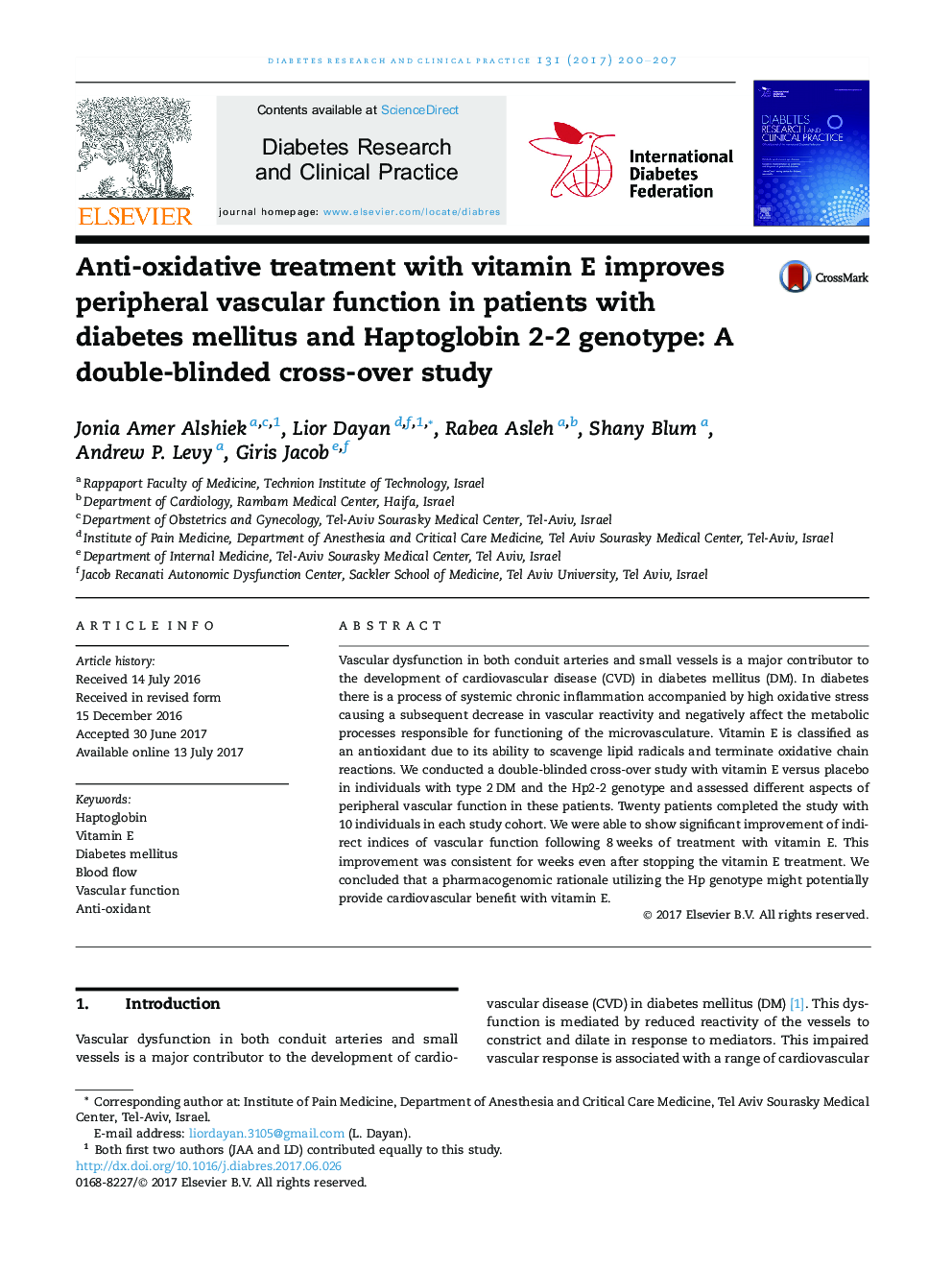| Article ID | Journal | Published Year | Pages | File Type |
|---|---|---|---|---|
| 5587251 | Diabetes Research and Clinical Practice | 2017 | 8 Pages |
â¢Eight weeks treatment with vitamin E improves vascular reactivity in diabetic patients with Haptoglobin 2-2 genotype.â¢The improvement is consistent even after stopping the treatment.â¢Anti oxidative treatment might provide benefit in a subpopulation of diabetic patients more susceptible to oxidative damage.
Vascular dysfunction in both conduit arteries and small vessels is a major contributor to the development of cardiovascular disease (CVD) in diabetes mellitus (DM). In diabetes there is a process of systemic chronic inflammation accompanied by high oxidative stress causing a subsequent decrease in vascular reactivity and negatively affect the metabolic processes responsible for functioning of the microvasculature. Vitamin E is classified as an antioxidant due to its ability to scavenge lipid radicals and terminate oxidative chain reactions. We conducted a double-blinded cross-over study with vitamin E versus placebo in individuals with type 2Â DM and the Hp2-2 genotype and assessed different aspects of peripheral vascular function in these patients. Twenty patients completed the study with 10 individuals in each study cohort. We were able to show significant improvement of indirect indices of vascular function following 8Â weeks of treatment with vitamin E. This improvement was consistent for weeks even after stopping the vitamin E treatment. We concluded that a pharmacogenomic rationale utilizing the Hp genotype might potentially provide cardiovascular benefit with vitamin E.
